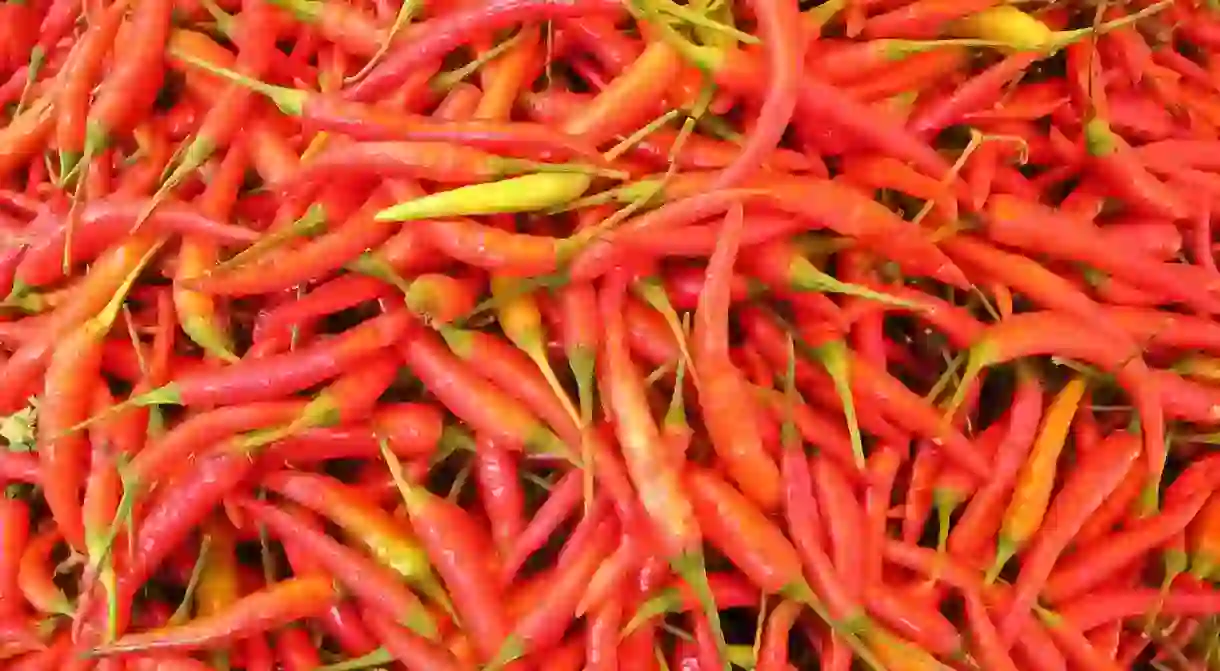The Best Traditional Laos Dishes You Need To Try

Experiencing all that Lao cuisine has to offer is not an experience for the faint of heart. Laos’ famous fermented fish sauce, padek, has a distinct fragrance. Insects ranging from silk worms to ants and crickets can be found on many menus. Raw and cooked meats from all manner of animals are grilled and served on a stick or sautéed and served with rice. The following traditional dishes are on the tame side and will gently introduce travelers to delicious, must-try Lao foods.
Fer and Kopiak
Fer is the Lao version on Vietnamese phở noodle soup. A rich broth with noodles and meats, it comes with a pile of greens and chili sauce to spice it to taste. Before the government started cracking down on illegal drugs, marijuana was a common ingredient as well. Kopiak is another common Lao soup with wider, handmade chewy rice noodles, meat and garlic.

Laap
Laap (sometimes transliterated as larb,) is Laos’ national dish. This minced meat salad can be made with raw or cooked beef, pork or fish in citrus juice flavored with padek, chilis, garlic, mint and onion. Cooked laap dishes are listed alongside the raw ones on menus so double check what you’re ordering! No meat seems to be off limits for laap as duck, buffalo, chicken or even mushrooms and tofu are available in restaurants and roadside stands. Grab a ball of sticky rice to scoop up the laap and eat with your hands.

Grilled River Fish
Landlocked Laos has no shortage of freshwater seafood caught in its many rivers. Grilled river fish is covered in salt, stuffed with lemongrass and other spices, skewered and grilled over coals. The flakey fish is most often eaten with the hands by pulling apart the meat and creating a lettuce wrap with sticky rice and sauces. The fish are not deboned so be aware of small bones as you dig in. Lao people have no problem eating eyeballs, tails and skin, but also aren’t offended by more choosey visitors. Just pass of the scraps to the stray dogs or cats that run the Lao streets.

Spicy Dipping Sauce
Whether ordering a meal at a restaurant or taking away street food from a stand, no Lao meal is complete without a variety of sauces. Jeow som is perhaps the best known, made with chilis, garlic, cilantro, sugar, lime juice and padek. Dip lettuce wraps, meats or sticky rice into the sauce for an added kick. Some Lao dipping sauces like jeow padek made with fermented fish sauce, lemongrass and ginger are often disliked by foreign pallets. Others like eggplant sauce with spring onion and garlic are major crowd pleasers.

Black Sticky Rice
The vast majority of Lao people are subsistence farmers. Sticky rice is a staple of the Lao diet and served with breakfast, lunch and dinner. Black sticky rice is a varietal that is sweeter than its white counterpart and is often used in desserts. Heineken Lao Brewery makes an award-winning black rice beer called Namkhong Special. Look for it in Vientiane.

Papaya Salad
Made with young, green papaya this is not your average fruit salad. The fruit is chopped into long thin strips and mixed with padek, lime, chilis, salt and sugar to give it a spicy and savory taste. Shrimp, tomatoes, eggplant and carrots are common additions as well. All of the ingredients are pounded with a mortar and pestle giving rise to the Lao name tam mak hoong, or “pounded papaya.”

Mango Sticky Rice
Mango sticky rice is a cooling go-to Lao dessert after a spicy Lao meal. Made with glutinous sticky rice cooked in coconut milk and sugar, it’s served with fresh ripe mangoes and often topped with sesame seeds. This dessert can also be made with black sticky rice or a mix of black and white rice which leads to a purple colored dessert.














